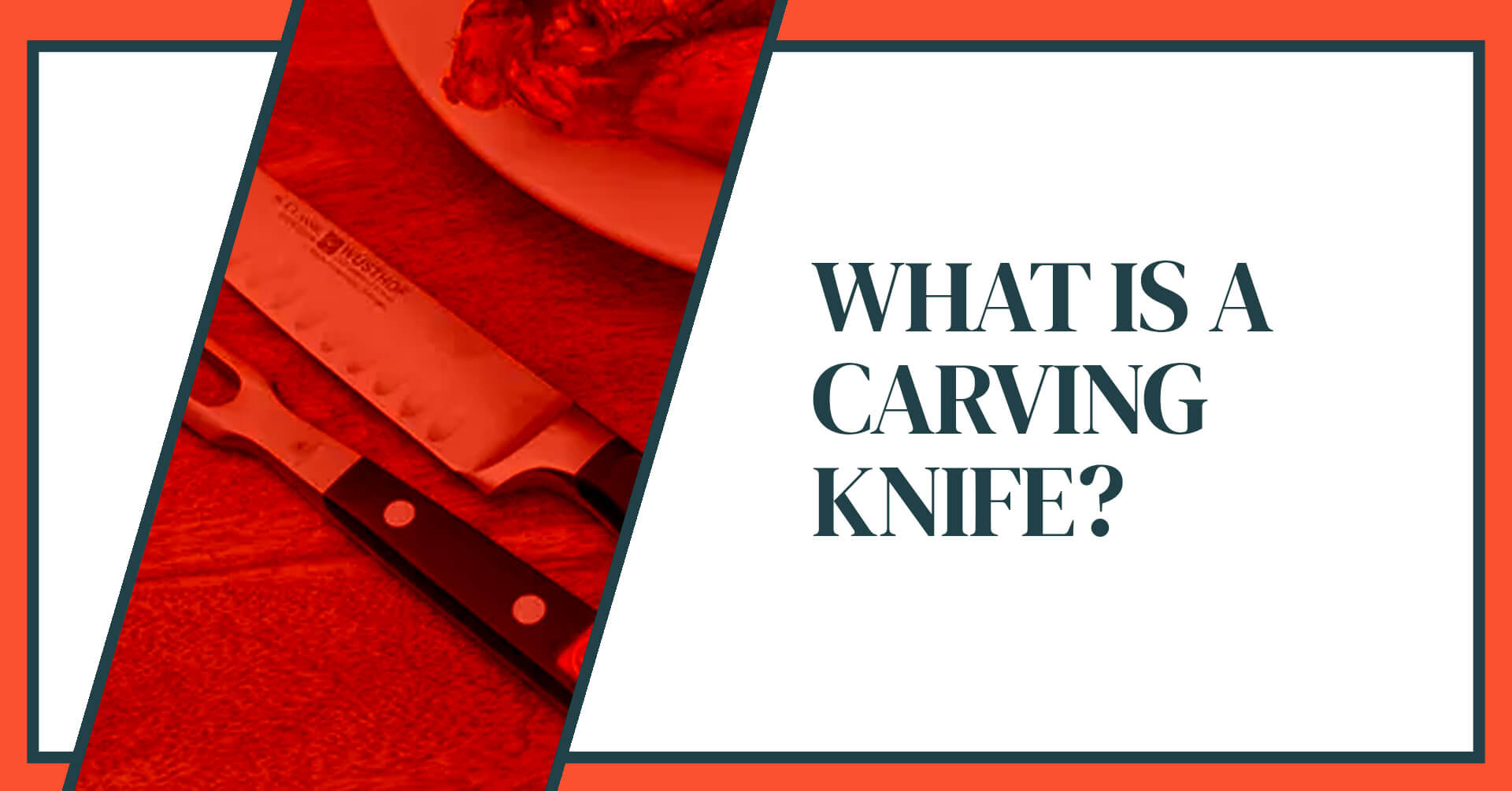What is a Carving Knife: Everything You Need To Know
Introduction To Carving Knives
Welcome to the ultimate guide to carving knives, your one-stop resource for everything you need to know about these essential kitchen tools.
From slicing through large roasts at family gatherings to creating intricate wood carvings, the right carving knife can make all the difference in precision and ease of use.
In this guide, we’ll cover the various types of carving knives available on the market, how to choose one based on blade material and length, and tips for maintaining a razor-sharp edge.
Key Takeaways
- There are two main carving knives: the standard carving knife and the slicing knife. Choosing the right one for your needs is important based on factors like blade material and length.
- Proper maintenance is essential to keep your carving knife in top condition. Regular sharpening, cleaning, and storage can prolong its lifespan while ensuring optimal performance.
- When selecting a new carving knife, consider the handle material and ergonomic design for comfortable use. Additionally, choosing the right edge type can make all the difference in achieving razor-sharp cuts.
- Invest in high-quality materials such as honing rods and sharpening stones to maintain your carving knives properly. Avoid harsh chemicals or bleach on them as they can damage their blades and handles.
Types Of Carving Knives
There are two main carving knives: the standard and the slicing knives.
Carving Knife
The carving knife, an indispensable tool in any kitchen, sets itself apart with its long, narrow blade and pointed tip. Designed for the precise slicing of cooked meat into thin slices and uniform portions, it is a true masterpiece when serving delightful cuts such as Thanksgiving turkey or prime rib.
The thin blades allow this sharp knife to slide effortlessly through soft meats while providing minimal resistance during the cutting process.
Additionally, a high-quality carving knife typically boasts ergonomic design elements that cater to beginners and experts alike. With features such as comfortable handles made from premium materials and well-balanced blades crafted from durable stainless steel or carbon steel varieties, these knives provide exceptional performance in every slice.
The Slicing Knife
The slicer knife is essential for achieving thin, precise cuts of meats and other ingredients. With its long, narrow blade and razor-sharp edge, this versatile kitchen staple can easily handle various slicing tasks that require precision and control.
In addition to having a more flexible blade than the broader chef’s knives, slicers usually feature straight or serrated edges.
The choice between these edge types depends on personal preference and the nature of the foods being sliced. Straight-edged slicing knives glide smoothly through soft fruits and cooked meats without tearing them apart, while serrated blades offer better control when cutting through crusty breads or tough-skinned vegetables.
How To Choose The Right Carving Knife
Consider the blade material, length, and edge type when choosing a carving knife that suits your needs; also, consider handle material and ergonomic design for comfortable use.
Blade Material
The blade material is an essential factor to consider when choosing a carving knife. Not all steel blades are equal, and it’s crucial to go for high-quality materials that offer durability, strength, and sharpness.
Steel is an iron alloy with a small percentage of carbon; this differentiates one type from another in terms of performance. For instance, a high-carbon steel blade can hold its edge longer than low-carbon stainless steel.
One example of excellent blade material is Damascus stainless steel. This alloy combines toughness and sharpness to create beautiful designs on the surface while holding an edge well during use.
Another popular option is ceramic blades because they remain sharp for long periods without dulling or rusting like metal ones do over time.
Overall, investing in a good-quality carving knife made from premium materials will make your food preparation much more comfortable and enjoyable in the long run.
Blade Length
Choosing the right blade length is essential when selecting a carving knife. The length of the blade determines how easily you can slice through meat and other foods.
The longer the blade, the easier it is to slice meat from big cuts like Brisket, Virginia Hams, or raw meat.
Handle Material
The handle material of a carving knife is as important as the blade itself. Handles must be durable, comfortable, and non-slippery to provide the right grip while slicing meat.
Various materials are available for handles ranging from plastic resin, wood, and bone to titanium and Micarta.
Many high-quality knives feature ergonomic designs that ensure a solid grip during use, even with wet hands. For example, some brands use textured rubber or soft-touch plastic grips on their handles, giving excellent control over the knife’s movements while reducing any chances of slipping.
However, wooden-handled knives look elegant and are well-balanced in your hand but require slightly more maintenance than other handle materials since they can crack if not dried correctly after washing them.
Edge Type
Choosing the right edge type for your carving knife is crucial to achieving razor-sharp cuts. There are two main types of knife edges: straight and serrated.
The straight blade is perfect for cutting through soft fruits and boneless and raw meat, while those with serrated edges (like bread knives) work best for crusty bread or tougher materials like bone-in roasts. Additionally, some knives have a combination edge that features a mix of straight and serrated sections, making them versatile tools in the kitchen.
Ultimately, it comes down to personal preference and the tasks you’ll use your carving knife for most frequently.
Tips For Proper Maintenance Of Carving Knives
To ensure your carving knife stays sharp and in top condition, it’s important to follow these simple maintenance tips – you won’t want to miss out on them!
Sharpening
Proper sharpening is essential to maintain the cutting edge of your carving knife to get those delicious thinner slices everyone is after. Here are some steps to follow:
- Use a honing rod or sharpening stone to sharpen your blade.
- Start with coarse grit and progress to a finer one.
- Hold the blade at a consistent angle as you sharpen, usually between 15 – 20 degrees.
- Sharpen each side of the blade evenly.
- After sharpening, use a leather strop to polish and smooth out any rough edges.
- Avoid using an electric sharpener as it can grind away too much of the blade and damage it.
- Regularly sharpen your knife to keep its edge sharp and prevent excess wear on the blade.
Invest in high-quality materials such as honing rods and sharpening stones to ensure that your carving knife performs at its best. Additionally, you must wash your knife after every use and store it safely to avoid accidents and prolong its lifespan.”
Cleaning
Cleaning carving knives is crucial to maintain their sharpness and prevent bacterial growth. Here are some key points to keep in mind when cleaning your carving knives:
- Hand wash the knife with warm soapy water using a non-abrasive sponge.
- Avoid placing the knife in the dishwasher or soaking it in water for an extended period, as this can damage the blade and handle.
- Dry the knife immediately after washing, as moisture can cause rust and other damage.
- For tough stains or stuck-on food, use a mild abrasive cleaner or baking soda paste to gently scrub the blade.
- When wiping down the blade, always do so in a direction away from your hand to prevent accidental cuts.
- Avoid harsh chemicals or bleach on the knife as they can damage its blade and handle.
- Store your knives properly after cleaning them in a knife block or sheath to prevent accidental damage.
By following these simple steps, you can ensure that your carving knives remain sharp and clean for years, making your kitchen tasks much easier and more efficient.
Storage
Proper storage of carving knives is crucial to maintaining their sharpness and quality over time. Here are some tips for storing your knives:
- Store knives in a knife block or on a magnetic strip, with the blades facing up or away from you.
- If you prefer to store them in a drawer, use a knife guard or sheath to protect both the blade and your fingers.
- Do not store knives loose in a drawer or countertop without protection, as they can damage each other.
- Keep carving forks separate from the knives to avoid damaging the blades.
- Always ensure that knives are clean and dry before putting them away to prevent rusting or corrosion.
Conclusion
In conclusion, selecting the right carving knife can make all the difference in preparing a perfectly sliced piece of meat or beautifully crafted woodwork.
With this ultimate guide to carving knives, you now have all the information needed to decide when shopping for a new knife. From understanding different blade materials and edge types to tips on proper maintenance, this guide has got you covered.
FAQs:
What Are Carving Knives Typically Used For?
Carving knives are designed to cut and slice meats, poultry, fish, and other foods into precise portions. They are ideal for creating clean slices of cooked meat, slice fish, or roasted vegetables.
What Types Of Carving Knives Are Available On The Market Today?
Many different types of carving knives are available, including traditional straight-edge blades, curved blades that allow you to effortlessly glide through tough cuts of meat, and serrated options that offer superior grip on slippery surfaces like roasts.
How Should I Care For My Carving Knife?
To ensure your knife remains sharp and effective over the long term, it’s important to keep it clean and dry after each use. Avoid using harsh chemicals or abrasive scrubbers when cleaning your blade to prevent metal or handle material damage.
Can I Sharpen A Dull Carving Knife By Myself At Home?
While some individuals may be comfortable sharpening their blades at home using a sharpening stone or electric sharpener, many prefer to leave this task up to the professionals. If you’re unsure how best to maintain your blade’s edge over time, consider consulting with an experienced local butcher or chef who can guide proper maintenance techniques tailored to your needs and recommend any specialized equipment you might require.
Do All Carving Knives Come With A Carving Fork?
No, not all carving knives come with a carving fork. While some carving knife sets include a carving fork as part of the package, it is not a universal feature. Including a carving, fork depends on the specific set or brand of carving knives you purchase. It’s always a good idea to check the product description or packaging to see if a carving fork is included or needs to be purchased separately.
Additional Resources
The Art of the Slice: A Dive into Japanese Knife Types
Western Style Knives 101 | A Comprehensive Introduction to the Basics
19 Types of Kitchen Knives & Their Uses
9 Kitchen Knife Care Tips for Maintaining Your Edge
Forging Culinary Excellence: The Best Steel For Kitchen Knives

